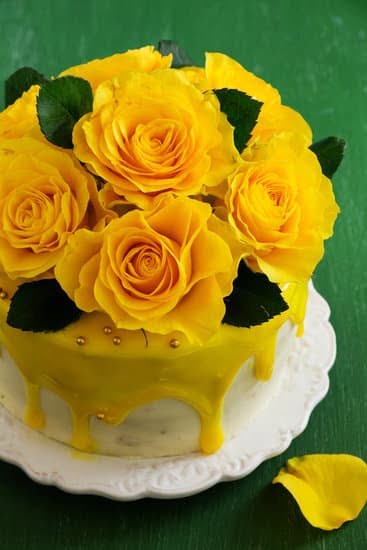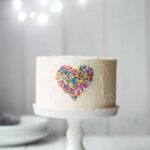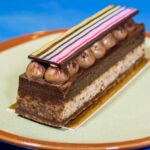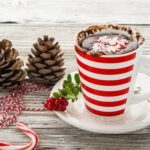Cake decorating dust is a key component in the world of cake decoration, allowing bakers and decorators to add a touch of magic and sparkle to their creations. Whether you are creating an extravagant wedding cake or a simple birthday treat, cake decorating dust can take your designs to the next level. In this article, we will explore the definition and importance of cake decorating dust, as well as its role in enhancing cake decorations.
Cake decorating dust refers to fine powders that come in a variety of colors and textures. These powders are used to add shimmer, sheen, and vibrant colors to cakes and other sweet treats. They can be applied using various techniques such as brushing, airbrushing, or dusting directly onto the surface of the cake. The result is a stunning visual effect that transforms plain cakes into works of art.
The use of cake decorating dust is essential in the process of creating stunning cake designs. It allows decorators to achieve unique effects such as metallic finishes, ombre shading, realistic texture, and even intricate patterns.
By using different types of dust and applying them strategically, decorators have endless possibilities for customization and creativity. Whether you want to create a magical fairytale theme or an elegant vintage-inspired design, cake decorating dust plays a vital role in bringing your vision to life.
In the following sections of this article, we will delve deeper into understanding different types of cake decorating dust and how they are used. We will explore both edible and non-edible options, highlight various application techniques, discuss safety considerations and precautions when working with dust, provide troubleshooting tips for common issues faced by decorators, and showcase unique ideas for incorporating dust into your designs.
So let’s dive in and discover how you can elevate your cake decorating with the enchanting power of dust.
Types of Cake Decorating Dust
When it comes to cake decorating, dust plays a crucial role in adding that extra special touch to your creations. Cake decorating dust is a fine powder that can be used to enhance and elevate the appearance of cakes by adding color, shine, and texture. There are two main types of cake decorating dust: edible and non-edible.
Edible dust is made from ingredients that are safe for consumption, making it suitable for direct contact with food. This type of dust is commonly used in cake decorating to add shimmer, sparkle, or vibrant colors to fondant, gum paste, buttercream, or other edible decorations. Edible dust comes in a wide range of flavors and colors, allowing decorators to customize their designs according to their taste preferences.
On the other hand, non-edible dust is made from materials that are not meant to be consumed and should only be used for decorative purposes. Non-edible dust often includes metallic powders like luster or petal dusts that give a shiny or matte finish to cake decorations.
It can also include mica powders or glitters that add a sparkle effect. While non-edible dust cannot be directly consumed, it offers versatility in terms of design possibilities and can create eye-catching effects.
Choosing between edible and non-edible cake decorating dust depends on various factors such as the desired effect, the type of design being created, personal preferences, and the regulations surrounding the intended use of the final product. Edible dust provides an added layer of creativity while maintaining the integrity of an edible creation. Non-edible dust allows for more diverse design options but must be handled with caution as it shouldn’t come into direct contact with food.
Whether you choose edible or non-edible dust for your cake decorating projects, both types offer unique opportunities to bring your creations to life. Experimenting with different textures and colors can help you achieve stunning results that will impress both yourself and your guests.
In the next sections, we will explore in more detail the different uses of edible and non-edible dust, how to apply them for desired effects, and some ideas for creative cake designs using dust. So let’s dive in.
Edible Cake Decorating Dust
Edible cake decorating dust is a versatile and essential component in the world of cake decoration. Made from edible ingredients, this type of dust adds color, texture, and shine to your creations, elevating them to a whole new level of beauty. Whether you are a beginner or an experienced baker, understanding edible cake decorating dust and how to use it effectively can greatly enhance your skills and the overall appeal of your cakes.
Edible dust is typically made from ingredients such as sugar, cornstarch, or rice flour. These fine particles are then mixed with food coloring to produce an array of vibrant hues. The most common flavors available include vanilla, chocolate, strawberry, and lemon, allowing you to complement or contrast the taste of your cake with the dust. Not only does edible dust bring visual appeal to your cakes, but it also adds a subtle flavor that can further delight your taste buds.
Applying edible cake decorating dust is relatively simple. There are several techniques you can use depending on the desired effect. One popular method is using a dry brush to gently apply the dust onto the surface of the cake or specific areas for highlighting details.
Another technique involves mixing the dust with alcohol or clear extract to create a paint-like consistency that can be used for more intricate designs or covering larger areas. Edible dust can also be used with stencils or molds for precise patterns and shapes.
When working with edible cake decorating dust, it is important to consider any allergies or dietary restrictions that individuals may have. Some people may have allergies to certain food coloring agents or other ingredients commonly found in edible dust. It is crucial to read labels carefully and ensure that all ingredients are safe for consumption before using them in your creations.
Non-Edible Cake Decorating Dust
When it comes to cake decorating, non-edible dust is a powerful tool that can add unique and eye-catching elements to your creations. Non-edible dust is made from materials that are not safe for consumption, but they provide stunning effects and textures that are hard to achieve with edible options.
In this section, we will explore the different materials used in non-edible dust, discuss their benefits and limitations, and delve into creative ways to incorporate them into your cake decorations.
Explanation of Non-Edible Materials Used
Non-edible dust is typically made from materials such as metallic powders, glitters, sanding sugar, and even ground up plastic particles. These ingredients are chosen for their ability to create dazzling finishes and enhance the visual appeal of the cake. Metallic powders like luster dust add a luxurious shine to decorations, while glitters and sanding sugar provide a sparkly effect. Ground up plastic particles can give a unique texture or simulate specific elements like snow or grass.
Benefits and Limitations of Using Non-Edible Dust
One of the main benefits of using non-edible dust is its durability. Unlike edible options that may dissolve or fade over time, non-edible dust stays intact for longer periods, making it ideal for cakes that need to be displayed for an extended period or transported. Additionally, non-edible dust offers a wider range of colors and effects compared to its edible counterparts.
However, it’s crucial to keep in mind that non-edible dust should never come into direct contact with the cake itself as it is not safe for consumption. Instead, it should only be applied on fondant decorations or other removable elements. Another limitation is that non-edible dust cannot be mixed directly into icing or buttercream as it won’t dissolve smoothly.
Creative Ways to Use Non-Edible Dust for Cake Decorations
Non-edible dust opens up a world of creative possibilities for cake decorators. It can be used to accentuate details such as piping, carved designs, or fondant flowers. For example, metallic dust can be brushed onto a cake’s edges to create an elegant metallic trim.
Glitters and sanding sugar are perfect for adding a touch of sparkle to birthday cakes or festive designs. Ground up plastic particles can be dusted over a winter-themed cake to simulate snow-covered landscapes.
It’s important to remember that less is often more when using non-edible dust. Overusing it can create overwhelming and messy results. Dust sparingly and strategically to highlight specific areas or elements on the cake. Experiment with different combinations and techniques to discover the effects that suit your style best.
With non-edible cake decorating dust, you have the opportunity to add extra flair and excitement to your cakes. Just ensure that you handle it carefully, apply it safely, and keep it away from any cake elements that will be consumed. In the next section, we will explore the various tools and techniques used for applying both edible and non-edible dust effectively on cakes.
Tools and Techniques for Applying Cake Decorating Dust
Cake decorating dust is a versatile tool that can be used to create stunning and intricate designs on cakes. However, applying the dust requires the right tools and techniques to achieve professional-looking results. In this section, we will explore the various tools used for applying cake decorating dust and provide step-by-step instructions on how to use them effectively.
Tools for Applying Cake Decorating Dust
To apply cake decorating dust, you will need the following tools:
- Soft brushes: These brushes are specifically designed for dusting cakes and are available in different sizes. They allow for precise application of dust onto the desired areas of the cake.
- Sponges: Sponges can be used to evenly distribute dust on larger surfaces of the cake.
- Dusting pouches or shakers: These tools are ideal for evenly distributing a fine layer of dust over large areas or all over the cake. Dusting pouches are made of fabric and have a drawstring closure, while shakers come with small holes that release the dust.
- Airbrush: An airbrush can be used to spray a fine mist of dust onto the cake, allowing for smooth and even coverage. This technique is particularly useful for achieving gradients or intricate designs.
Techniques for Applying Cake Decorating Dust
Now that you have your tools ready, let’s go through some techniques for applying cake decorating dust:
- Brushing: Dip a soft brush into the desired color of dust and tap off any excess. Gently brush the dust onto the surface of the cake using light strokes until you achieve your desired effect.
- Sponging: Moisten a sponge with water and squeeze out any excess moisture. Dip it into your chosen color of dust and lightly dab it onto the cake until you achieve the desired coverage. This technique is great for creating a softer and more blended appearance.
- Pouching or Shaking: Fill your dusting pouch or shaker with the desired color of dust. Gently squeeze or shake the pouch to release a fine layer of dust over the cake. Use this technique for covering large areas quickly and evenly.
- Airbrushing: Mix your desired color of dust with a small amount of clear alcohol or lemon extract to create a liquid mixture. Pour this mixture into your airbrush and spray it evenly over the cake while moving in smooth, controlled motions.
Remember to start with a light touch when applying dust and gradually build up the intensity as needed. Practice on a test surface before applying it to your masterpiece to ensure you achieve the desired effect.
Using these tools and techniques, you can take your cake decorating skills to new heights and create breathtaking designs using cake decorating dust.
Safety Considerations and Precautions
Cake decorating dust can add a beautiful and professional touch to your cake creations, but it is important to consider safety precautions when working with both edible and non-edible dust. Whether you are using edible or non-edible dust, there are a few key considerations to keep in mind to ensure the safe use of cake decorating dust.
When working with edible dust, it is important to check for any allergen warnings. Some edible dust may contain common allergens such as nuts or gluten, so it is crucial to check the packaging and ingredient list before using them. If you are unsure about potential allergens, it is best to consult with the manufacturer or opt for hypoallergenic options.
In addition to checking for allergens, proper handling and storage practices should also be followed. Edible dust should be stored in a cool and dry place away from direct sunlight. It is also important to wash your hands thoroughly before handling edible dust, especially if you have been working with non-edible materials such as colorants or glitters.
When using non-edible dust, it is important to be aware of the materials used in these products. Some non-edible dust may contain materials that are not intended for consumption, such as plastic or metallic elements.
These materials should never come into contact with food that will be consumed. It is recommended to create a barrier between the non-edible decorations and the food by using a separate cake board or placing them on top of a food-safe material.
Additionally, caution should be exercised when handling and applying both types of dust during the cake decorating process. It is advisable to wear gloves when working with non-edible dust, as some colors may stain the skin temporarily. When applying any type of dust onto cakes or other baked goods, ensure that there are no sharp or protruding edges that could pose a choking hazard.
By following these safety considerations and precautions, you can enjoy using cake decorating dust without compromising the safety of your creations. With proper handling, storage, and a little extra care, you can add a touch of sparkle and elegance to your cakes while ensuring the well-being of those who will be enjoying them. Remember that safety should always be a priority in cake decorating, so take the necessary steps to create beautiful and safe designs with dust.
Unique Cake Decorating Dust Ideas
Cake decorating dust is a versatile and creative tool that can be used to elevate your cake designs to the next level. In addition to the traditional uses of dust such as adding color or shimmer, there are many unique ways to incorporate dust into your cake decorations. Here, we will explore some inspiring ideas that will help you create intricate and stunning designs using cake decorating dust.
One unique way to use dust is to create a textured effect on your cakes. By applying a layer of edible or non-edible dust onto a stencil, you can achieve beautiful patterns and designs on top of your cakes. This technique works particularly well for creating lace-like patterns or adding depth and dimension to floral decorations.
Simply place the stencil over your cake and use a brush or airbrush to apply the dust in a light, even layer. Carefully remove the stencil to reveal the intricate design.
Another creative idea is to mix different types of dust together to create custom colors and effects. For example, you can blend pearl dust with colored dusts to create a metallic sheen or mix different shades of edible dusts to achieve gradient effects. Experimenting with different combinations will allow you to create unique and eye-catching designs that are tailored specifically to your cake.
Furthermore, using edible dust as an accent for painted details can add a touch of elegance and sophistication to your creations. After painting intricate designs on your cakes using food-grade paint, gently sprinkle some matching edible dust over the wet paint. The dry powdered form of the edible dust will adhere easily, creating a beautiful shimmering effect that enhances the details of your design.
These are just a few examples of how you can get creative with cake decorating dust. Remember, there are no limits when it comes to designing cakes. Don’t be afraid to experiment and try new techniques using different types of dust for various effects. With practice and imagination, you’ll be able to master these unique cake decorating ideas and create stunning cakes that are truly one-of-a-kind.
| Idea | Description |
|---|---|
| Textured Effect with Stencils | Create intricate patterns by applying dust onto stencils and transferring the design onto your cake. |
| Mixing Dust for Custom Colors | Blend different types of dust together to create custom colors and effects on your cakes. |
| Edible Dust as Paint Accent | Sprinkle matching edible dust over wet paint designs to add shimmer and enhance details. |
Cake Decorating Dust Troubleshooting
Cake decorating dust can be a fun and versatile tool for enhancing your cake decorations, but like any other technique, it can come with its own set of challenges. In this section, we will discuss some common issues and challenges that you may encounter when working with dust, as well as troubleshooting tips and solutions to help you overcome them.
One of the most common issues when using cake decorating dust is clumping. Clumping occurs when the dust particles stick together or gather in certain areas instead of dispersing evenly on the surface of the cake. This can result in uneven or patchy decorations.
To prevent clumping, make sure to use a small soft brush and apply a thin layer of dust at a time. Lightly tap off any excess before applying it to the cake. Additionally, avoid using too much liquid or wet elements on your cake before applying the dust, as this can cause it to clump.
Another issue you may encounter is color fading or dulling over time. Depending on the type and brand of dust you are using, some colors may lose their vibrancy over time or when exposed to light. To prevent this issue, choose high-quality dust from reputable brands that have been specifically formulated for cake decorating purposes. It’s also important to store your decorated cakes away from direct sunlight or fluorescent lighting to preserve their colors for longer periods.
Finally, an issue that many beginners face is achieving precise and detailed designs with dust. Achieving intricate designs with dust requires practice and patience. Start by practicing on a piece of parchment paper or a test cake before attempting more complex designs. You can also try using different brushes or tools with finer bristles to achieve more precise control over the placement of the dust particles.
If you’re facing any other problems while working with cake decorating dust, there are plenty of expert resources available online that provide step-by-step tutorials and troubleshooting guides specific to different types of decorations. Additionally, don’t hesitate to reach out to fellow cake decorators or join online communities where you can ask questions and receive advice from experienced individuals.
By being aware of common issues and armed with troubleshooting tips, you can overcome any challenges that may arise when working with cake decorating dust. Remember, practice makes perfect, so don’t be discouraged if your first attempts don’t turn out exactly as planned. With time and experience, you’ll develop your own techniques and style to create beautiful and professional-looking designs using dust.
Conclusion
In conclusion, cake decorating dust is a versatile and essential ingredient in the world of cake decoration. Throughout this article, we have explored various types of dust, including edible and non-edible options, as well as different tools and techniques for applying it. We have also discussed safety considerations and precautions to ensure the proper handling and storage of dust.
The use of cake decorating dust allows for endless possibilities when it comes to enhancing the appearance of your cakes. Whether you choose to use edible or non-edible dust, both offer unique benefits and can be used creatively to achieve stunning designs. From adding subtle shimmers to creating intricate patterns, dust can truly elevate the overall look of your cakes.
It is important to remember that working with dust may present some challenges, but with the troubleshooting tips provided in this article, any issues can be easily overcome. By experimenting and having fun with different techniques, you can further develop your own unique style in cake decoration.
Frequently Asked Questions
What is the edible dust on cakes?
Edible dust on cakes refers to a type of decoration that is commonly used to add color, shine, and a touch of sparkle to baked goods. It is typically made from a combination of food-grade ingredients, such as powdered sugar, coloring agents, and sometimes even edible glitter.
The dust comes in different colors and can be applied using various techniques like dusting it directly onto the cake or mixing it with a clear alcohol solution to create a paint-like consistency.
Can I sprinkle luster dust on a cake?
Yes, you can sprinkle luster dust on a cake as it is specifically designed for this purpose. Luster dust is a type of edible powder that adds a shimmery or metallic effect when applied to cakes or other confections.
It is usually available in an array of colors and shades, including gold and silver tones. Sprinkling luster dust over a cake can give it an elegant finishing touch, making it visually appealing and adding a touch of glamour.
What is the difference between luster dust and petal dust?
While both luster dust and petal dust are types of edible powders used for cake decorating, they have slightly different characteristics and purposes. Luster dust is primarily used for adding shimmer or shine to cakes by giving them a metallic or pearlescent effect. It is often applied dry by sprinkling or with the help of a brush.
On the other hand, petal dust is typically used for creating realistic color variations on flower petals or other delicate details on cakes. Petal dust has matte finishes without any metallic sheen and works best when mixed with liquid such as alcohol or lemon extract before applying it onto the cake surface using brushes or airbrushes.

Welcome to our cake decorating blog! My name is Destiny Flores, and I am the proud owner of a cake decorating business named Cake Karma. Our mission is to provide delicious, beautiful cakes for all occasions. We specialize in creating custom cakes that are tailored specifically to each customer’s individual needs and tastes.





